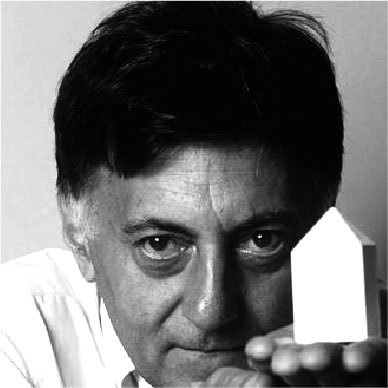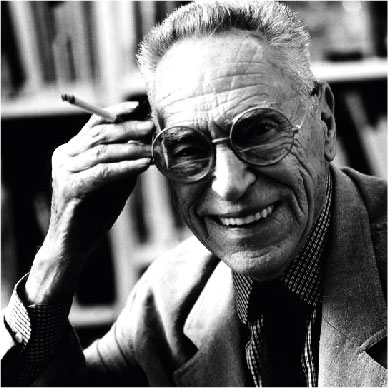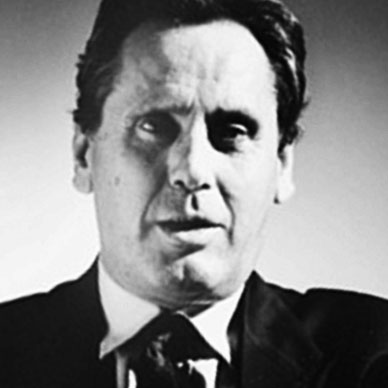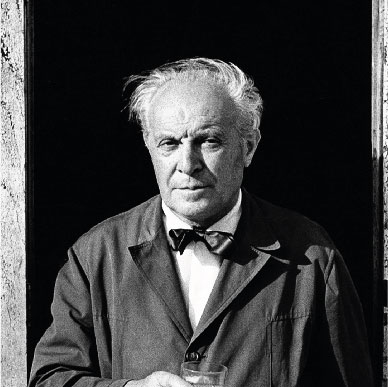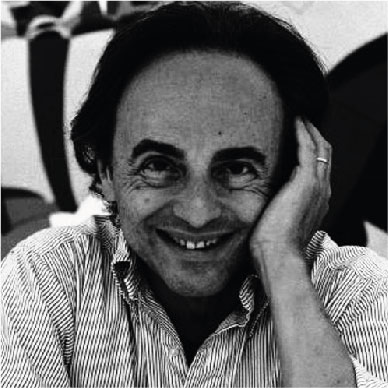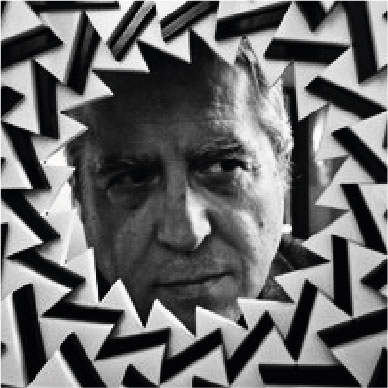A.R.
Achille Castiglioni
“Perché tutto quello che non si è riusciti a investire nei rapporti umani viene investito negli oggetti. Per questo l’uomo regredisce in essi tanto volentieri...”
Jean Baudrillard
Achille Castiglioni
“Perché tutto quello che non si è riusciti a investire nei rapporti umani viene investito negli oggetti. Per questo l’uomo regredisce in essi tanto volentieri...”
Jean Baudrillard
Achille Castiglioni
“Perché tutto quello che non si è riusciti a investire nei rapporti umani viene investito negli oggetti. Per questo l’uomo regredisce in essi tanto volentieri...”
Jean Baudrillard
Aldo Rossi
“Un mobile è un misto: la forma, la funzione, il materiale e tante belle cose che si attribuiscono all’architettura. I mobili poi sono oggetti d’affezione o almeno io credo debbano esserlo: il mito del do it yourself si è sfasciato insieme ai brutti oggetti che produceva. Così l’artigiano ha riacquistato la propria autonomia e la propria virtù, ammesso che l’avesse mai perduta. Sono solo alcune considerazioni che mi suggeriscono i mobili di Bruno Longoni.”
Aldo Rossi, Milano 15 aprile 1993
Aldo Rossi
“Un mobile è un misto: la forma, la funzione, il materiale e tante belle cose che si attribuiscono all’architettura. I mobili poi sono oggetti d’affezione o almeno io credo debbano esserlo: il mito del do it yourself si è sfasciato insieme ai brutti oggetti che produceva. Così l’artigiano ha riacquistato la propria autonomia e la propria virtù, ammesso che l’avesse mai perduta. Sono solo alcune considerazioni che mi suggeriscono i mobili di Bruno Longoni.”
Aldo Rossi, Milano 15 aprile 1993
“Because everything we did not manage to invest in human relationships is invested in objects. This is why we go back to them so willingly…”
Jean Baudrillard
“Because everything we did not manage to invest in human relationships is invested in objects. This is why we go back to them so willingly…”
Jean Baudrillard
“Because everything we did not manage to invest in human relationships is invested in objects. This is why we go back to them so willingly…”
Jean Baudrillard
“A piece of furniture is a mixture of form, function, material and beautiful details attributed to architecture. It is – or at least I believe it should be – an ‘object of affection’: the myth of ‘do it yourself’ collapsed together with its bad results. So artisans regain their autonomy and virtue, supposing they ever lost them. These are some conclusions I draw looking at Bruno Longoni’s furniture”.
Aldo Rossi, Milan, April 15th 1993
“A piece of furniture is a mixture of form, function, material and beautiful details attributed to architecture. It is – or at least I believe it should be – an ‘object of affection’: the myth of ‘do it yourself’ collapsed together with its bad results. So artisans regain their autonomy and virtue, supposing they ever lost them. These are some conclusions I draw looking at Bruno Longoni’s furniture”.
Aldo Rossi, Milan, April 15th 1993
Aldo Rossi
“Un mobile è un misto: la forma, la funzione, il materiale e tante belle cose che si attribuiscono all’architettura. I mobili poi sono oggetti d’affezione o almeno io credo debbano esserlo: il mito del do it yourself si è sfasciato insieme ai brutti oggetti che produceva. Così l’artigiano ha riacquistato la propria autonomia e la propria virtù, ammesso che l’avesse mai perduta. Sono solo alcune considerazioni che mi suggeriscono i mobili di Bruno Longoni.”
Aldo Rossi, Milano 15 aprile 1993
Aldo Rossi
“Un mobile è un misto: la forma, la funzione, il materiale e tante belle cose che si attribuiscono all’architettura. I mobili poi sono oggetti d’affezione o almeno io credo debbano esserlo: il mito del do it yourself si è sfasciato insieme ai brutti oggetti che produceva. Così l’artigiano ha riacquistato la propria autonomia e la propria virtù, ammesso che l’avesse mai perduta. Sono solo alcune considerazioni che mi suggeriscono i mobili di Bruno Longoni.”
Aldo Rossi, Milano 15 aprile 1993
Aldo Rossi
“Un mobile è un misto: la forma, la funzione, il materiale e tante belle cose che si attribuiscono all’architettura. I mobili poi sono oggetti d’affezione o almeno io credo debbano esserlo: il mito del do it yourself si è sfasciato insieme ai brutti oggetti che produceva. Così l’artigiano ha riacquistato la propria autonomia e la propria virtù, ammesso che l’avesse mai perduta. Sono solo alcune considerazioni che mi suggeriscono i mobili di Bruno Longoni.”
Aldo Rossi, Milano 15 aprile 1993
Achille Castigioni
“Perché tutto quello che non si è riusciti a investire nei rapporti umani viene investito negli oggetti. Per questo l’uomo regredisce in essi tanto volentieri...”
Jean Baudrillard
Achille Castiglioni
“Perché tutto quello che non si è riusciti a investire nei rapporti umani viene investito negli oggetti. Per questo l’uomo regredisce in essi tanto volentieri...”
Jean Baudrillard
“A piece of furniture is a mixture of form, function, material and beautiful details attributed to architecture. It is – or at least I believe it should be – an ‘object of affection’: the myth of ‘do it yourself’ collapsed together with its bad results. So artisans regain their autonomy and virtue, supposing they ever lost them. These are some conclusions I draw looking at Bruno Longoni’s furniture”.
Aldo Rossi, Milan, April 15th 1993
“A piece of furniture is a mixture of form, function, material and beautiful details attributed to architecture. It is – or at least I believe it should be – an ‘object of affection’: the myth of ‘do it yourself’ collapsed together with its bad results. So artisans regain their autonomy and virtue, supposing they ever lost them. These are some conclusions I draw looking at Bruno Longoni’s furniture”.
Aldo Rossi, Milan, April 15th 1993
“A piece of furniture is a mixture of form, function, material and beautiful details attributed to architecture. It is – or at least I believe it should be – an ‘object of affection’: the myth of ‘do it yourself’ collapsed together with its bad results. So artisans regain their autonomy and virtue, supposing they ever lost them. These are some conclusions I draw looking at Bruno Longoni’s furniture”.
Aldo Rossi, Milan, April 15th 1993
“Because everything we did not manage to invest in human relationships is invested in objects. This is why we go back to them so willingly…”
Jean Baudrillard
“Because everything we did not manage to invest in human relationships is invested in objects. This is why we go back to them so willingly…”
Jean Baudrillard
A.C.
Luca Meda
I mobili disegnati dall’ Arch. Luca Meda sono caratterizzati da essenze tradizionali, quali il frassino e il noce, abbinate all’ardesia, la lamiera metallica e il cuoio. La rigorosità del disegno definisce l’eleganza senza tempo di ogni progetto.
La formazione a Milano all’Accademia di Brera, successivamente presso la scuola di Ulm negli anni 60, e l’amicizia con Aldo Rossi sono tratti distintivi di un grande Architetto che nel disegno a mano libera trovava la prediletta modalità di comunicazione, come ben documenta la recente mostra a lui dedicata organizzata dalla Triennale di Milano : “ Luca Meda. La felicità del progetto”.
Luca Meda
I mobili disegnati dall’ Arch. Luca Meda sono caratterizzati da essenze tradizionali, quali il frassino e il noce, abbinate all’ardesia, la lamiera metallica e il cuoio. La rigorosità del disegno definisce l’eleganza senza tempo di ogni progetto.
La formazione a Milano alla scuola dell’arte, di Brera, successivamente presso la scuola di Ulm negli anni 60 e l’amicizia con Aldo Rossi sono tratti distintivi di un grande Architetto che nel disegno a mano libera trovava la prediletta modalità di comunicazione, come ben documenta la recente mostra a lui dedicata organizzata dalla Triennale di Milano.
Luca Meda
I mobili disegnati dall’ Arch. Luca Meda sono caratterizzati da essenze tradizionali, quali il frassino e il noce, abbinate all’ardesia, la lamiera metallica e il cuoio. La rigorosità del disegno definisce l’eleganza senza tempo di ogni progetto.
La formazione a Milano alla scuola dell’arte, di Brera, successivamente presso la scuola di Ulm negli anni 60 e l’amicizia con Aldo Rossi sono tratti distintivi di un grande Architetto che nel disegno a mano libera trovava la prediletta modalità di comunicazione, come ben documenta la recente mostra a lui dedicata organizzata dalla Triennale di Milano.
Luca Meda
I mobili disegnati dall’ Arch. Luca Meda sono caratterizzati da essenze tradizionali, quali il frassino e il noce, abbinate all’ardesia, la lamiera metallica e il cuoio. La rigorosità del disegno definisce l’eleganza senza tempo di ogni progetto.
La formazione a Milano alla scuola dell’arte, di Brera, successivamente presso la scuola di Ulm negli anni 60 e l’amicizia con Aldo Rossi sono tratti distintivi di un grande Architetto che nel disegno a mano libera trovava la prediletta modalità di comunicazione, come ben documenta la recente mostra a lui dedicata organizzata dalla Triennale di Milano.
Luca Meda
I mobili disegnati dall’ Arch. Luca Meda sono caratterizzati da essenze tradizionali, quali il frassino e il noce, abbinate all’ardesia, la lamiera metallica e il cuoio. La rigorosità del disegno definisce l’eleganza senza tempo di ogni progetto.
La formazione a Milano alla scuola dell’arte, di Brera, successivamente presso la scuola di Ulm negli anni 60 e l’amicizia con Aldo Rossi sono tratti distintivi di un grande Architetto che nel disegno a mano libera trovava la prediletta modalità di comunicazione, come ben documenta la recente mostra a lui dedicata organizzata dalla Triennale di Milano.
The furniture designed by Luca Meda is characterised by traditional materials such as ash and walnut, combined with slate, lacquered sheet metal and leather. The rigorous design gives every product a timeless elegance
His training in Milan at the Brera Academy, later at the Ulm School of Design in the 1960s, and his friendship with Aldo Rossi are the distinguishing features of a great architect who found the best way of expression in freehand drawing, as is well documented in the recent exhibition dedicated to him organised by the Milan Triennale: “Luca Meda. The happiness of the project”.
The furniture designed by Luca Meda is characterised by traditional materials such as ash and walnut, combined with slate, lacquered sheet metal and leather. The rigorous design gives every product a timeless elegance.
His training in Milan at the Brera Academy, later at the Ulm School of Design in the 1960s, and his friendship with Aldo Rossi are the distinguishing features of a great architect who found the best way of expression in freehand drawing, as is well documented in the recent exhibition dedicated to him organised by the Milan Triennale: “Luca Meda. The happiness of the project”.
The furniture designed by Luca Meda is characterised by traditional materials such as ash and walnut, combined with slate, lacquered sheet metal and leather. The rigorous design gives every product a timeless elegance.
His training in Milan at the Brera Academy, later at the Ulm School of Design in the 1960s, and his friendship with Aldo Rossi are the distinguishing features of a great architect who found the best way of expression in freehand drawing, as is well documented in the recent exhibition dedicated to him organised by the Milan Triennale: “Luca Meda. The happiness of the project”.
The furniture designed by Luca Meda is characterised by traditional materials such as ash and walnut, combined with slate, lacquered sheet metal and leather. The rigorous design gives every product a timeless elegance.
His training in Milan at the Brera Academy, later at the Ulm School of Design in the 1960s, and his friendship with Aldo Rossi are the distinguishing features of a great architect who found the best way of expression in freehand drawing, as is well documented in the recent exhibition dedicated to him organised by the Milan Triennale: “Luca Meda. The happiness of the project”.
The furniture designed by Luca Meda is characterised by traditional materials such as ash and walnut, combined with slate, lacquered sheet metal and leather. The rigorous design gives every product a timeless elegance.
His training in Milan at the Brera Academy, later at the Ulm School of Design in the 1960s, and his friendship with Aldo Rossi are the distinguishing features of a great architect who found the best way of expression in freehand drawing, as is well documented in the recent exhibition dedicated to him organised by the Milan Triennale: “Luca Meda. The happiness of the project”.
Gio Ponti
“Erano gli anni della Casa di via Dezza a Milano, progetto emblematico del suo modo di pensare all’architettura degli interni. E questo mobile-libreria auto-illuminante, con quattro cassettoni come base, un contenitore/bar nella parte centrale, mensole/libreria nella parte superiore e lampade al neon alloggiate tra lo schienale superiore e il bar e le mensole – ben rappresenta l’idea di questi ultimi venticinque anni di lavoro, spesi alla ricerca della leggerezza più luminosa, dei rapporti figura/sfondo, negativo/positivo, vuoto/pieno, luce/ombra e distillata in forme affusolate. Forme rese ancor più scattanti dal contrasto tra materiali e finiture, come il rovere e la laccatura color avorio di quest’oggetto-ambiente, proteso
verso lo spazio (con il cassettone che sembra spingersi in avanti) e capace contemporaneamente di accogliere il fruitore tra le proprie ali superiori, abbracciandolo idealmente.”
Gio Ponti
“Erano gli anni della Casa di via Dezza a Milano, progetto emblematico del suo modo di pensare all’architettura degli interni. E questo mobile-libreria auto-illuminante, con quattro cassettoni come base, un contenitore / bar nella parte centrale, mensole / libreria nella parte superiore e lampade al neon alloggiate tra lo schienale superiore e il bar e le mensole – ben rappresenta l’idea di questi ultimi venticinque anni di lavoro, spesi alla ricerca della leggerezza più luminosa, dei rapporti figura / sfondo, negativo / positivo, vuoto / pieno, luce/ombra e distillata in forme affusolate. Forme rese ancor più scattanti dal contrasto tra materiali e finiture, come il rovere e la laccatura color avorio di quest’oggetto-ambiente, proteso verso lo spazio (con il cassettone che sembra spingersi in avanti) e capace contemporaneamente di accogliere il fruitore tra le proprie ali superiori, abbracciandolo idealmente.”
Gio Ponti
“Erano gli anni della Casa di via Dezza a Milano, progetto emblematico del suo modo di pensare all’architettura degli interni. E questo mobile-libreria auto-illuminante, con quattro cassettoni come base, un contenitore/bar nella parte centrale, mensole/libreria nella parte superiore e lampade al neon alloggiate tra lo schienale superiore e il bar e le mensole – ben rappresenta l’idea di questi ultimi venticinque anni di lavoro, spesi alla ricerca della leggerezza più luminosa, dei rapporti figura/sfondo, negativo/positivo, vuoto/pieno, luce/ombra e distillata in forme affusolate. Forme rese ancor più scattanti dal contrasto tra materiali e finiture, come il rovere e la laccatura color avorio di quest’oggetto-ambiente, proteso
verso lo spazio (con il cassettone che sembra spingersi in avanti) e capace contemporaneamente di accogliere il fruitore tra le proprie ali superiori, abbracciandolo idealmente.”
Gio Ponti
“Erano gli anni della Casa di via Dezza a Milano, progetto emblematico del suo modo di pensare all’architettura degli interni. E questo mobile-libreria auto-illuminante, con quattro cassettoni come base, un contenitore/bar nella parte centrale, mensole/libreria nella parte superiore e lampade al neon alloggiate tra lo schienale superiore e il bar e le mensole – ben rappresenta l’idea di questi ultimi venticinque anni di lavoro, spesi alla ricerca della leggerezza più luminosa, dei rapporti figura/sfondo, negativo/positivo, vuoto/pieno, luce/ombra e distillata in forme affusolate. Forme rese ancor più scattanti dal contrasto tra materiali e finiture, come il rovere e la laccatura color avorio di quest’oggetto-ambiente, proteso verso lo spazio (con il cassettone che sembra spingersi in avanti) e capace contemporaneamente di accogliere il fruitore tra le proprie ali superiori, abbracciandolo idealmente.”
Gio Ponti
“Erano gli anni della Casa di via Dezza a Milano, progetto emblematico del suo modo di pensare all’architettura degli interni. E questo mobile-libreria auto-illuminante, con quattro cassettoni come base, un contenitore/bar nella parte centrale, mensole/libreria nella parte superiore e lampade al neon alloggiate tra lo schienale superiore e il bar e le mensole – ben rappresenta l’idea di questi ultimi venticinque anni di lavoro, spesi alla ricerca della leggerezza più luminosa, dei rapporti figura/sfondo, negativo/positivo, vuoto/pieno, luce/ombra e distillata in forme affusolate. Forme rese ancor più scattanti dal contrasto tra materiali e finiture, come il rovere e la laccatura color avorio di quest’oggetto-ambiente, proteso verso lo spazio (con il cassettone che sembra spingersi in avanti) e capace contemporaneamente di accogliere il fruitore tra le proprie ali superiori, abbracciandolo idealmente.”
“This project dates back to the years of the House in via Dezza in Milan, emblematic project of the architect’s way of conceiving interior architecture. This backlit cabinet-bookcase with four drawers on the bottom, a container/cocktail cabinet in the middle, shelves/bookcase in the upper part and neon lights fitted between the upper back, the cocktail cabinet and the shelves, well represents the idea of these last 25 years of work. They were dedicated to the research of the brightest lightness, of the relationship between shape and background, negative and positive, light and shadow and characterized by tapered forms. Forms made even more slender by the contrast between materials and finishes, such as oak and the white ivory lacquer of this object-environment, stretched out into the space (with the chest of drawers that seems to push forward) and at the same time able to receive consumers between its superior wings, by ideally embracing them”.
“This project dates back to the years of the House in via Dezza in Milan, emblematic project of the architect’s way of conceiving interior architecture. This backlit cabinet-bookcase with four drawers on the bottom, a container/cocktail cabinet in the middle, shelves/bookcase in the upper part and neon lights fitted between the upper back, the cocktail cabinet and the shelves, well represents the idea of these last 25 years of work. They were dedicated to the research of the brightest lightness, of the relationship between shape and background, negative and positive, light and shadow and characterized by tapered forms. Forms made even more slender by the contrast between materials and finishes, such as oak and the white ivory lacquer of this object-environment, stretched out into the space (with the chest of drawers that seems to push forward) and at the same time able to receive consumers between its superior wings, by ideally embracing them”.
“This project dates back to the years of the House in via Dezza in Milan, emblematic project of the architect’s way of conceiving interior architecture. This backlit cabinet-bookcase with four drawers on the bottom, a container/cocktail cabinet in the middle, shelves/bookcase in the upper part and neon lights fitted between the upper back, the cocktail cabinet and the shelves, well represents the idea of these last 25 years of work. They were dedicated to the research of the brightest lightness, of the relationship between shape and background, negative and positive, light and shadow and characterized by tapered forms. Forms made even more slender by the contrast between materials and finishes, such as oak and the white ivory lacquer of this object-environment, stretched out into the space (with the chest of drawers that seems to push forward) and at the same time able to receive consumers between its superior wings, by ideally embracing them”.
“This project dates back to the years of the House in via Dezza in Milan, emblematic project of the architect’s way of conceiving interior architecture. This backlit cabinet-bookcase with four drawers on the bottom, a container/cocktail cabinet in the middle, shelves/bookcase in the upper part and neon lights fitted between the upper back, the cocktail cabinet and the shelves, well represents the idea of these last 25 years of work. They were dedicated to the research of the brightest lightness, of the relationship between shape and background, negative and positive, light and shadow and characterized by tapered forms. Forms made even more slender by the contrast between materials and finishes, such as oak and the white ivory lacquer of this object-environment, stretched out into the space (with the chest of drawers that seems to push forward) and at the same time able to receive consumers between its superior wings, by ideally embracing them”.
“This project dates back to the years of the House in via Dezza in Milan, emblematic project of the architect’s way of conceiving interior architecture. This backlit cabinet-bookcase with four drawers on the bottom, a container/cocktail cabinet in the middle, shelves/bookcase in the upper part and neon lights fitted between the upper back, the cocktail cabinet and the shelves, well represents the idea of these last 25 years of work. They were dedicated to the research of the brightest lightness, of the relationship between shape and background, negative and positive, light and shadow and characterized by tapered forms. Forms made even more slender by the contrast between materials and finishes, such as oak and the white ivory lacquer of this object-environment, stretched out into the space (with the chest of drawers that seems to push forward) and at the same time able to receive consumers between its superior wings, by ideally embracing them”.
Ugo Nespolo
“Lavorare, lavorare, lavorare, preferisco il rumore del mare”
Ugo Nespolo
Ugo Nespolo
“Lavorare, lavorare, lavorare, preferisco il rumore del mare”
Ugo Nespolo
Ugo Nespolo
“Lavorare, lavorare, lavorare, preferisco il rumore del mare”
Ugo Nespolo
Ugo Nespolo
“Lavorare, lavorare, lavorare, preferisco il rumore del mare”
Ugo Nespolo
Ugo Nespolo
“Lavorare, lavorare, lavorare, preferisco il rumore del mare”
Ugo Nespolo
“Work, work, work, I prefer the sound of the sea”
Ugo Nespolo
“Work, work, work, I prefer the sound of the sea”
Ugo Nespolo
“Work, work, work, I prefer the sound of the sea”
Ugo Nespolo
“Work, work, work, I prefer the sound of the sea”
Ugo Nespolo
“Work, work, work, I prefer the sound of the sea”
Ugo Nespolo
Marcello Morandini
“ARTE come conoscenza e arricchimento culturale, ARCHITETTURA come habitat e utopia, DESIGN come ergonomia, funzione e identità.”
Marcello Morandini
Marcello Morandini
“ARTE come conoscenza e arricchimento culturale, ARCHITETTURA come habitat e utopia, DESIGN come ergonomia, funzione e identità.”
Marcello Morandini
Marcello Morandini
“ARTE come conoscenza e arricchimento culturale, ARCHITETTURA come habitat e utopia, DESIGN come ergonomia, funzione e identità.”
Marcello Morandini
Marcello Morandini
“ARTE come conoscenza e arricchimento culturale, ARCHITETTURA come habitat e utopia, DESIGN come ergonomia, funzione e identità.”
Marcello Morandini
Marcello Morandini
“ARTE come conoscenza e arricchimento culturale, ARCHITETTURA come habitat e utopia, DESIGN come ergonomia, funzione e identità.”
Marcello Morandini
“ART as knowledge and cultural enrichment, ARCHITECTURE as habitat and utopia, DESIGN as ergonomics, function and identity.”
Marcello Morandini
“ART as knowledge and cultural enrichment, ARCHITECTURE as habitat and utopia, DESIGN as ergonomics, function and identity.”
Marcello Morandini
“ART as knowledge and cultural enrichment, ARCHITECTURE as habitat and utopia, DESIGN as ergonomics, function and identity.”
Marcello Morandini
“ART as knowledge and cultural enrichment, ARCHITECTURE as habitat and utopia, DESIGN as ergonomics, function and identity.”
Marcello Morandini
“ART as knowledge and cultural enrichment, ARCHITECTURE as habitat and utopia, DESIGN as ergonomics, function and identity.”
Marcello Morandini
Indirizzo ⁄ Address
Bruno Longoni Atelier d'arredamento
22063 Cantù (CO)
Via G. da Cermenate 73
Tel. +39 031 715 616
E-mail info@longonibruno.it
C.F. / P.IVA 03557510132
Indirizzo ⁄ Address
Bruno Longoni Atelier d'arredamento
22063 Cantù (CO)
Via G. da Cermenate 73
Tel. +39 031 715 616
E-mail info@longonibruno.it
C.F. / P.IVA 03557510132
Indirizzo ⁄ Address
Bruno Longoni Atelier d'arredamento
22063 Cantù (CO)
Via G. da Cermenate 73
Tel. +39 031 715 616
E-mail info@longonibruno.it
C.F. / P.IVA 03557510132
Indirizzo ⁄ Address
Bruno Longoni Atelier d'arredamento
22063 Cantù (CO)
Via G. da Cermenate 73
Tel. +39 031 715 616
E-mail info@longonibruno.it
C.F. / P.IVA 03557510132
Indirizzo ⁄ Address
Bruno Longoni Atelier d'arredamento
22063 Cantù (CO)
Via G. da Cermenate 73
Tel. +39 031 715 616
E-mail info@longonibruno.it
C.F. / P.IVA 03557510132

